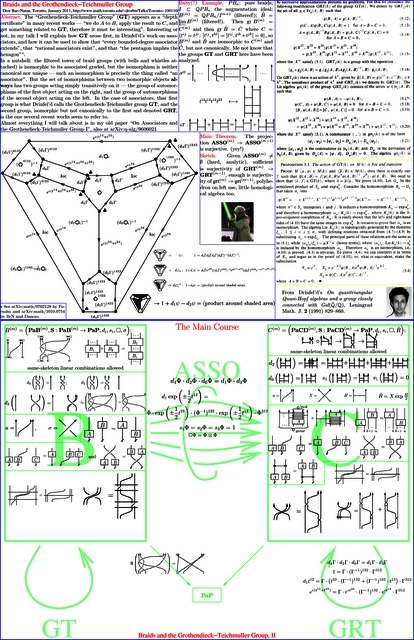Braids and the Grothendieck-Teichmuller Group
University
of Toronto's Symplectic Geometry Seminar
Monday, January 10 2011, 2PM
Abstract. The "Grothendieck-Teichmuller Group" (GT) appears as a "depth certificate" in many recent works - "we do A to B, apply the result to C, and get something related to GT, therefore it must be interesting". Interesting or not, in my talk I will explain how GT arose first, in Drinfel'd's work on associators, and how it can be used to show that "every bounded-degree associator extends", that "rational associators exist", and that "the pentagon implies the hexagon".In a nutshell: the filtered tower of braid groups (with bells and whistles attached) is isomorphic to its associated graded, but the isomorphism is neither canonical nor unique - such an isomorphism is precisely the thing called "an associator". But the set of isomorphisms between two isomorphic objects *always* has two groups acting simply transitively on it - the group of automorphisms of the first object acting on the right, and the group of automorphisms of the second object acting on the left. In the case of associators, that first group is what Drinfel'd calls the Grothendieck-Teichmuller group GT, and the second group, isomorphic but not canonically to the first and denoted GRT, is the one several recent works seem to refer to.
Almost everything I will talk about is in my old paper "On Associators and the Grothendieck-Teichmuller Group I, also at arXiv:q-alg/9606021.
Handout. GT.html, GT.pdf, GT.png (also as GT-1.png, GT-2.png).
Sources. GT.zip, Pensieve: 2011-01.

 Talk
Video.
Talk
Video.